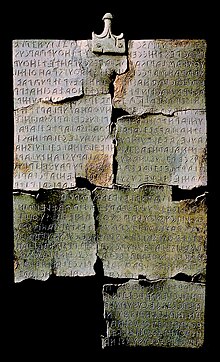Cortona
Cortona | |
|---|---|
| Città di Cortona | |
 | |
 Coat of arms | |
show Location of Cortona | |
 Cortona Location of Cortona in Italy | |
| Coordinates: 43°16′32″N 11°59′17″E / 43.27556°N 11.98806°ECoordinates: 43°16′32″N 11°59′17″E / 43.27556°N 11.98806°E | |
| Country | Italy |
| Region | Tuscany |
| Province | Arezzo (AR) |
| Frazioni | Adatti, Bocena, Borgonuovo, Camucia, Cantalena, Capezzine Centoia, Casale, Cegliolo, Chianacce, Cignano, Creti, Falzano, Farneta, Fasciano, Fossa del Lupo, Fratta, Fratticciola, Gabbiano, Mengaccini, Mercatale, Mezzavia, Monsigliolo, Montalla, Montanare, , Novelle, Ossaia, Pergo, Pierle, Pietraia, Poggioni, Portole, Riccio, Ronzano, Ruffignano, San Donnino Val di Pierle, San Lorenzo Rinfrena, San Marco in Villa, San Pietro a Cegliolo, San Pietro a Dame, Santa Caterina, Sant’Andrea di Sorbello, Sant’Angelo, Seano, Sodo, Tavarnelle, , Teverina, Tornia, Torreone, Valecchie, Vallone. |
| Government | |
| • Mayor | Luciano Meoni |
| Area | |
| • Total | 343 km2 (132 sq mi) |
| Elevation | 494 m (1,621 ft) |
| Population (30 June 2017)[3] | |
| • Total | 22,104 |
| • Density | 64/km2 (170/sq mi) |
| Demonym(s) | Cortonesi |
| Time zone | UTC+1 (CET) |
| • Summer (DST) | UTC+2 (CEST) |
| Postal code | 52044 |
| Dialing code | 0575 |
| Patron saint | Saint Margaret of Cortona |
| Saint day | 22 February |
| Website | Official website |
Cortona (/kɔːrˈtoʊnə/, Italian: [korˈtoːna]) is a town and comune in the province of Arezzo, in Tuscany, Italy. It is the main cultural and artistic center of the Val di Chiana after Arezzo.
History[]
This section needs expansion. You can help by . (June 2008) |

Originally an Umbrian city, it was conquered and enlarged by the Etruscans, who called it Curtun. During the 7th century BC, it joined the Etruscan League.[citation needed][4]
Cortona eventually became a Roman colony under the name Corito. The origin-legends and ancient names of Cortona are described by George Dennis.[5] In the final stages of the Gothic War (535–554), Cortona was sacked and destroyed.
Cortona became a Ghibellinian city state in the 13th century, with its own currency. From 1325 to 1409, the Ranieri-Casali family successfully ruled the town. After being conquered by Ladislaus of Naples in 1409, Cortona was sold to the Medici in 1411. In 1737, the senior branch of the Medici line became extinct and Cortona came under the authority of the House of Lorraine. Following the Italian Wars of Independence, Tuscany—Cortona included—became part of the Kingdom of Italy.
Cortona foundation legend[]
The foundation of Cortona remains mixed in legends dating to classic times. These were later reworked especially in the late Renaissance period under Cosimo I de' Medici. The 17th-century Guide of Giacomo Lauro, reworked from writings of Annio da Viterbo, states that 108 years after the Great Flood, Noah entered the Valdichiana via the Tiber and Paglia rivers. He preferred this place to anywhere else in Italy, because it was so fertile, and dwelt there for thirty years. One of Noah's descendants was Crano, his son who came to the hilltop and, liking the high position, the fine countryside and the calm air, built the city of Cortona on it in 273 years after the Great Flood.
Name[]
Cortona is derived from Latin Cortōna, and from Etruscan



